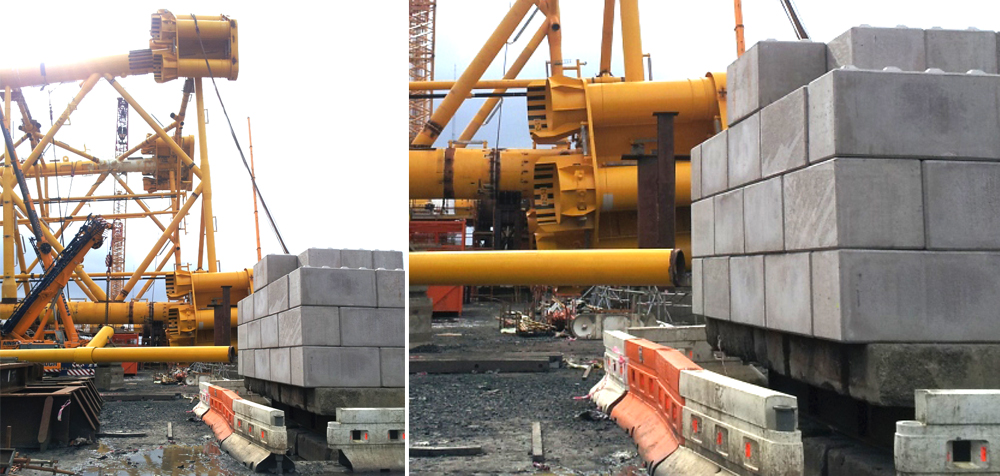The term ‘’kentledge’ was first coined in early as 1607 and originally referred to pig iron or scrap metal used as ballast for ships. The word’s use has widened in recent years and the term kentledge is now widely used to describe any form of counterweight or ballast weight. Precast concrete blocks are ideal ‘kentledge’ as they are readily available in many shapes, forms and weights and are increasingly being used as ballast for hoarding and temporary / security fencing for example. In the this case, the hoarding or fencing will be fixed to the free standing precast concrete kentledge blocks – thereby avoiding the need to dig foundations (which can often be expensive, time consuming and a danger to buried services)
There are some basic rules when considering whether to use precast concrete blocks for kentledge which should make the whole process much easier –
1. Off the shelf solution
If your supplier has a wide range of blocks and good production capacity it should be possible to consider a block’s size and weight for your project that is ‘’off the shelf’’ The two obvious benefits of this are that the blocks will probably be readily available at all times and they will probably be much cheaper than a bespoke solution.
2. High strength concrete
As you may well need to drill and fix anchors or bolts into the kentledge blocks you should make sure the concrete is a high strength mix with no recycled aggregate content. Your supplier of fixings will only warrant the bolt or anchor if it is fixed into quality concrete.
3. Stackable blocks
Where larger ballast weights or kentledge is required it is often a good idea to consider building up a stack of smaller interlocking blocks rather than asking a manufacturer to cast larger bespoke blocks. Once again, by using ‘’off the shelf’’ blocks you can be certain of availability and they will also be easier to handle. Once the project is complete you will also find that interlocking concrete ‘’Lego’’ type blocks can then be re-sold to waste recycling companies for use a push / retaining walls.
4. Check out your supplier
You should make sure your supplier is a member of a recognised trade body (e.g. the British Precast Concrete Federation). As you will be relying on the blocks being a certain weight / density you should make sure the manufacturer meets industry quality standards.
5. Think out side the box
Sometimes a product that has not been designed with kentledge in mind can make perfect ballast weights. For example Solar panel counterweights are often made up of precast concrete blocks whose original purpose might’ve been marking out underground electric cabling.









